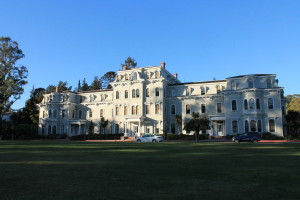Women’s colleges are dwindling in number, despite their long line of successful alumnae and satisfied students. Since the unexpected March announcement of the closing of Sweet Briar College in Virginia, many wonder whether women’s colleges still have a place in society today.
According to the Women’s College Coalition (WCC), 230 women’s colleges existed in the United States 50 years ago. Today, only 40 remain. A few have become coed, such as Wilson College and Vassar College, but many have been closed due to lack of finances and declining number of applicants, as is the case with Sweet Briar.
In the 19th century, any prestigious college was exclusively for men, and institutions for women were limited to finishing schools or religious seminaries. Wesleyan College in Georgia was the first women’s college in 1839 and still prevails today. Mount Holyoke College was founded in 1837 as a female seminary and received its collegiate charter in 1888. It is the oldest of the Seven Sisters, a group of women’s colleges that were considered to be the equivalent to men’s Ivy League colleges. Mills College is the first women’s college to be opened west of the Rockies in 1852.
Data from the Pew Research Center analysis of the U.S. Census Bureau shows that women have surpassed men in college enrollment out of high school with 71 percent of women compared to 61 percent of men. The pattern of more women attending college than men is seen especially among Hispanic and Black students.
Mills Senior Alice Hewitt praises her experience at a women’s college and the growth she has experienced.
“I don’t think I would have the confidence to take whatever class, pursue whatever career, if I didn’t attend a women’s college and had gotten the support and empowerment that Mills provides,” Hewitt said.
Today, colleges dedicated to women are changing. With Mills at the forefront of the policy adjustment, women’s colleges are opening admissions to transgender students as well as select numbers of men into graduate and some undergraduate programs.
Senior Ashleigh Bell expressed how a place solely dedicated to women supported her identity.
“Mills provided a space for me as a person of color, who is deaf, and a woman to find that my voice and my experiences count,” Bell said. “I learned how to truly extend that same support to my peers.”
Not all women’s colleges are in danger, however. Schools such as Wellesley and Barnard are seeing their highest applications and enrolments yet. According to their website, Wellesley received a record number of applications and had their most selective admission rate in over 30 years. In the same year, Barnard also set their record for number of applications, especially for Early Decision, making them the most selective women’s college in the U.S.
“Women’s colleges are still needed as the fight to have authentic and equal space in society for women continues,” Bell said.



